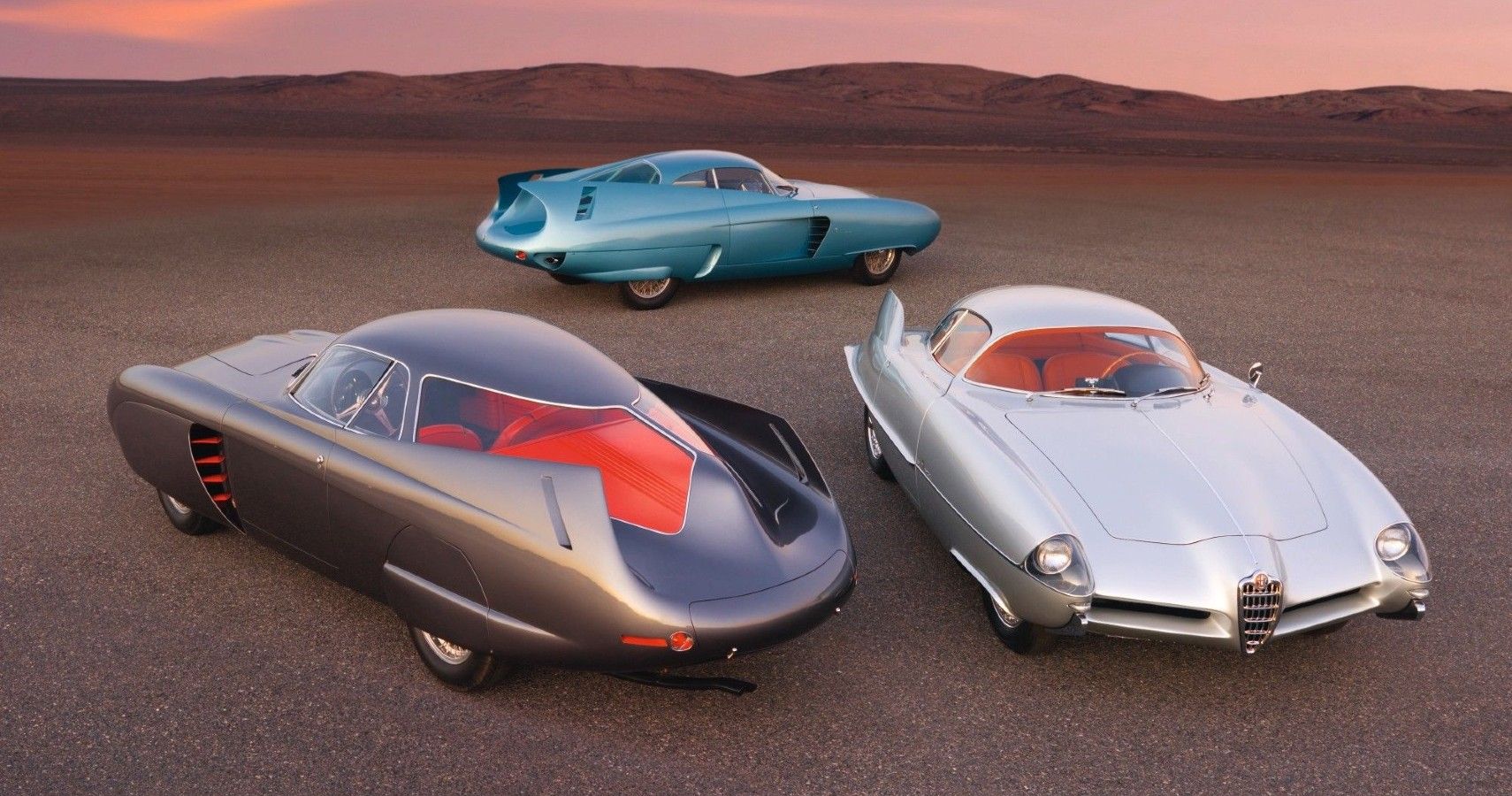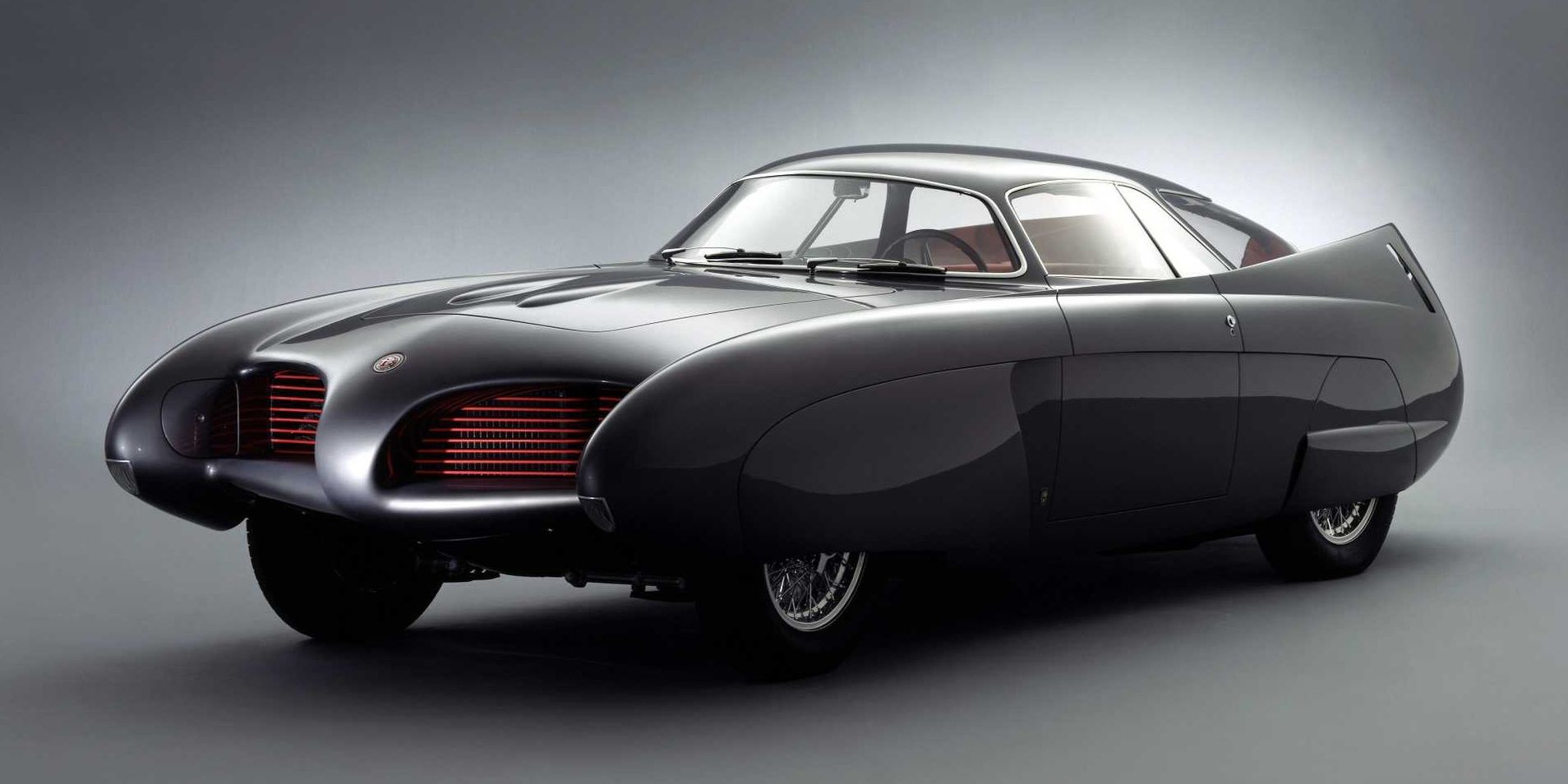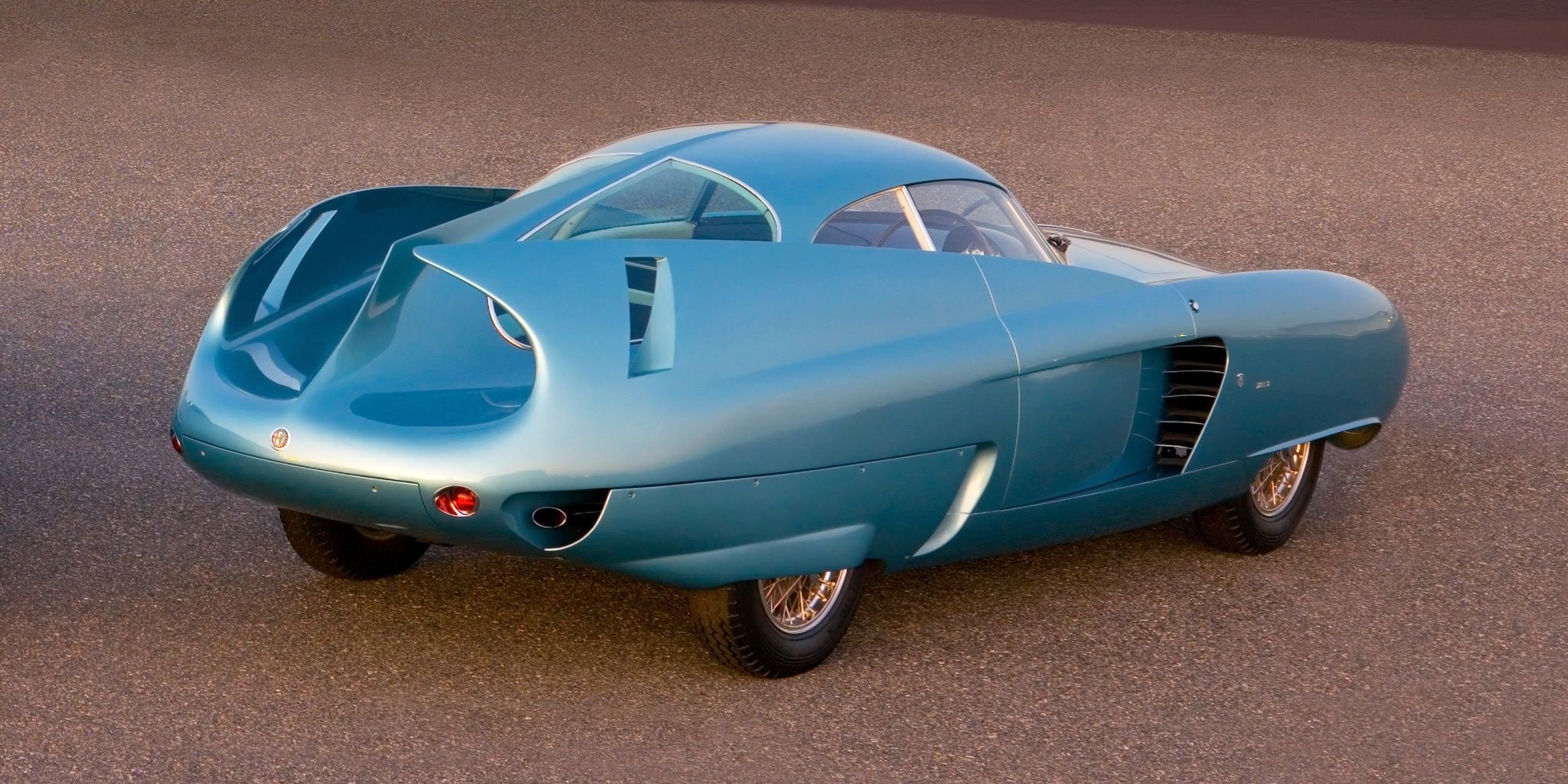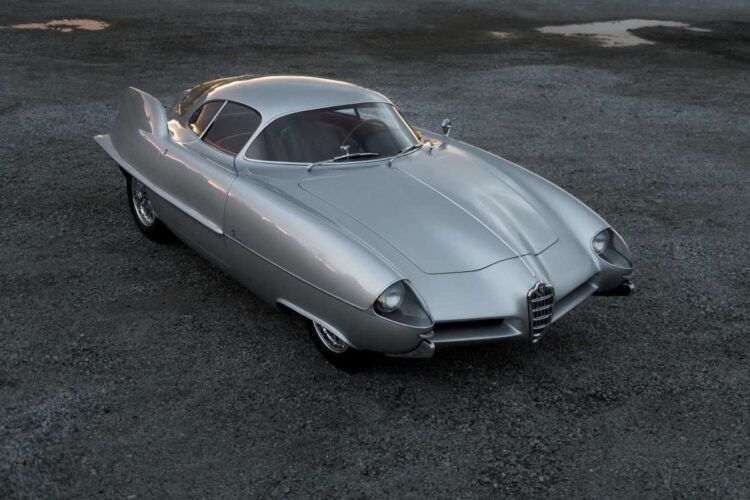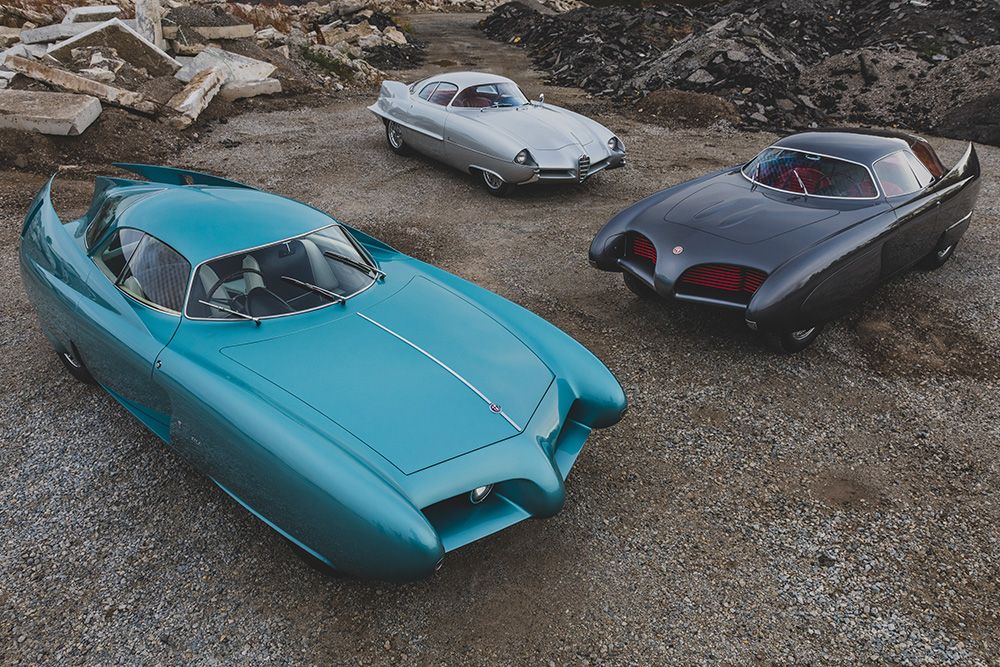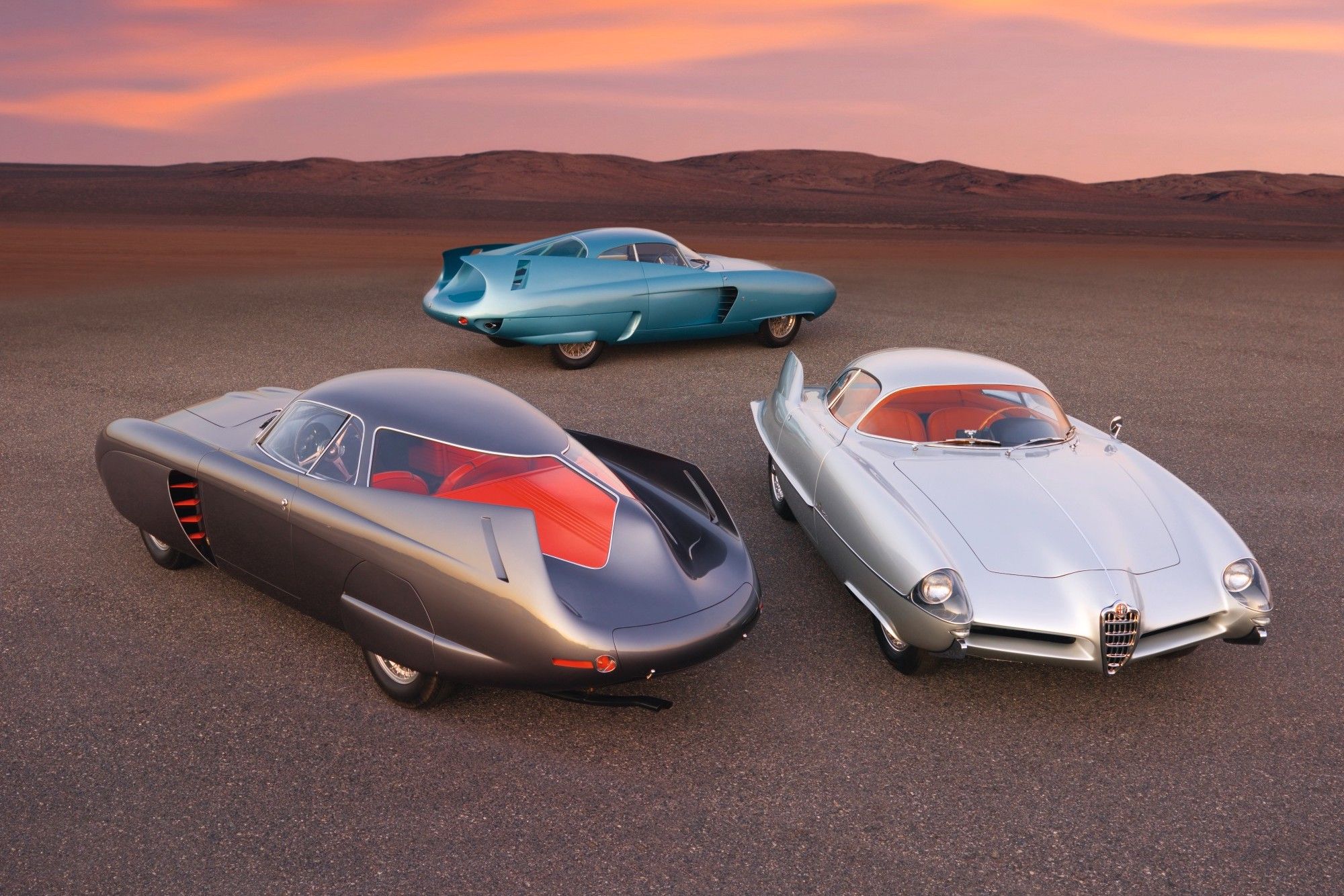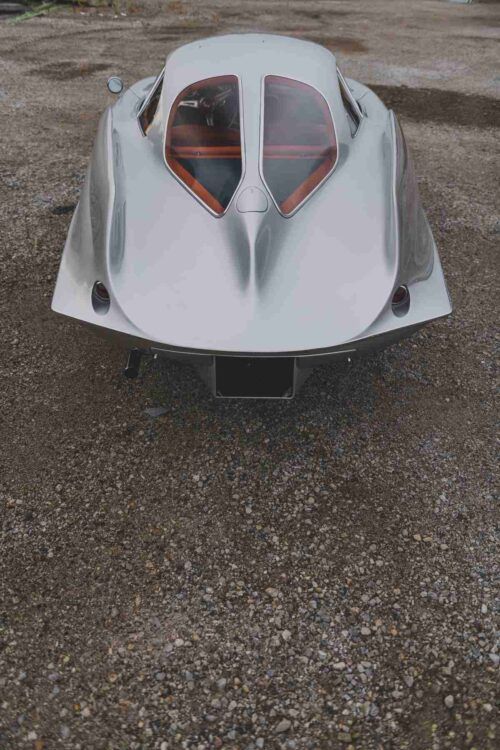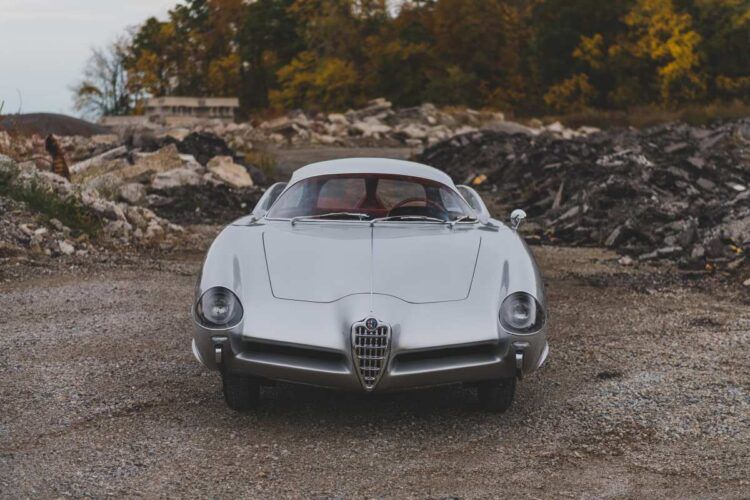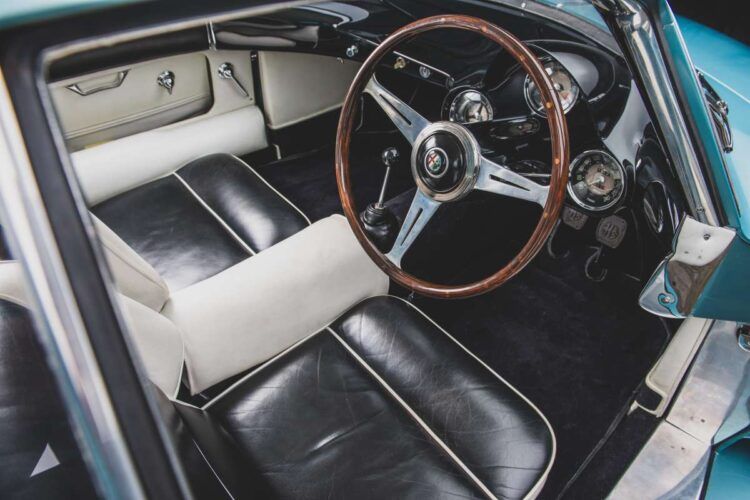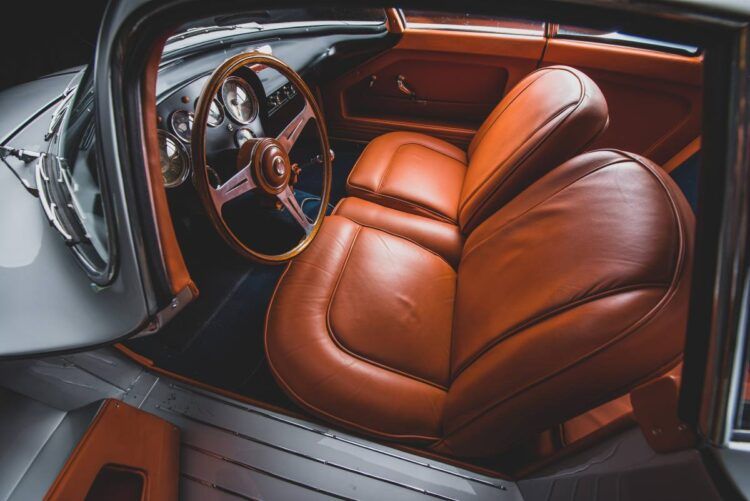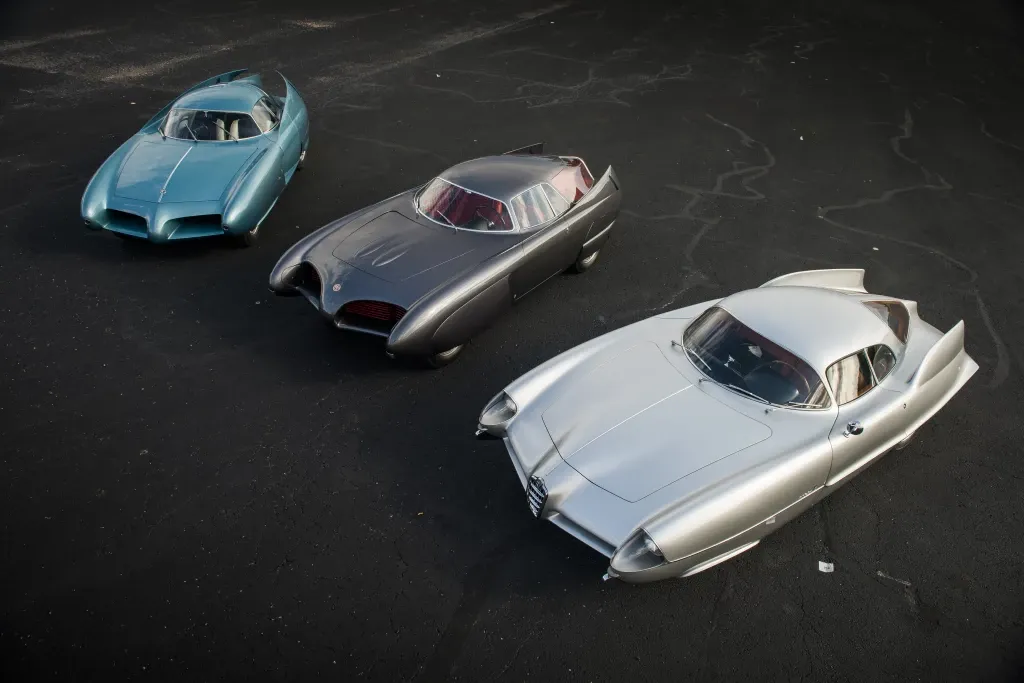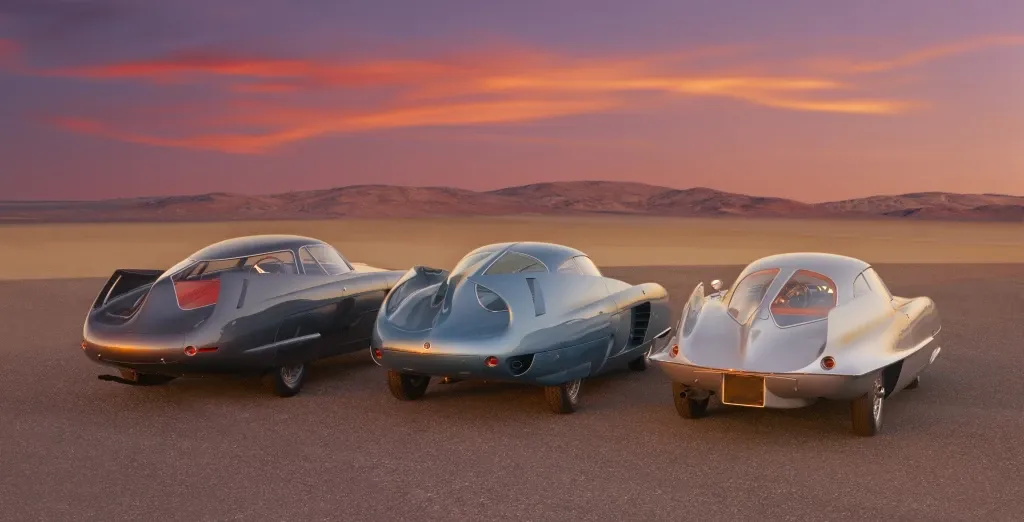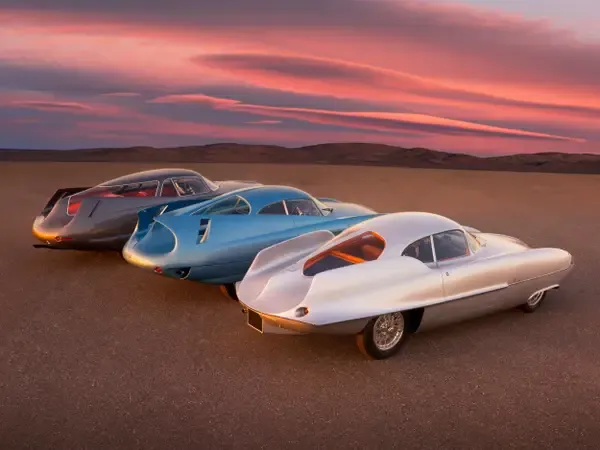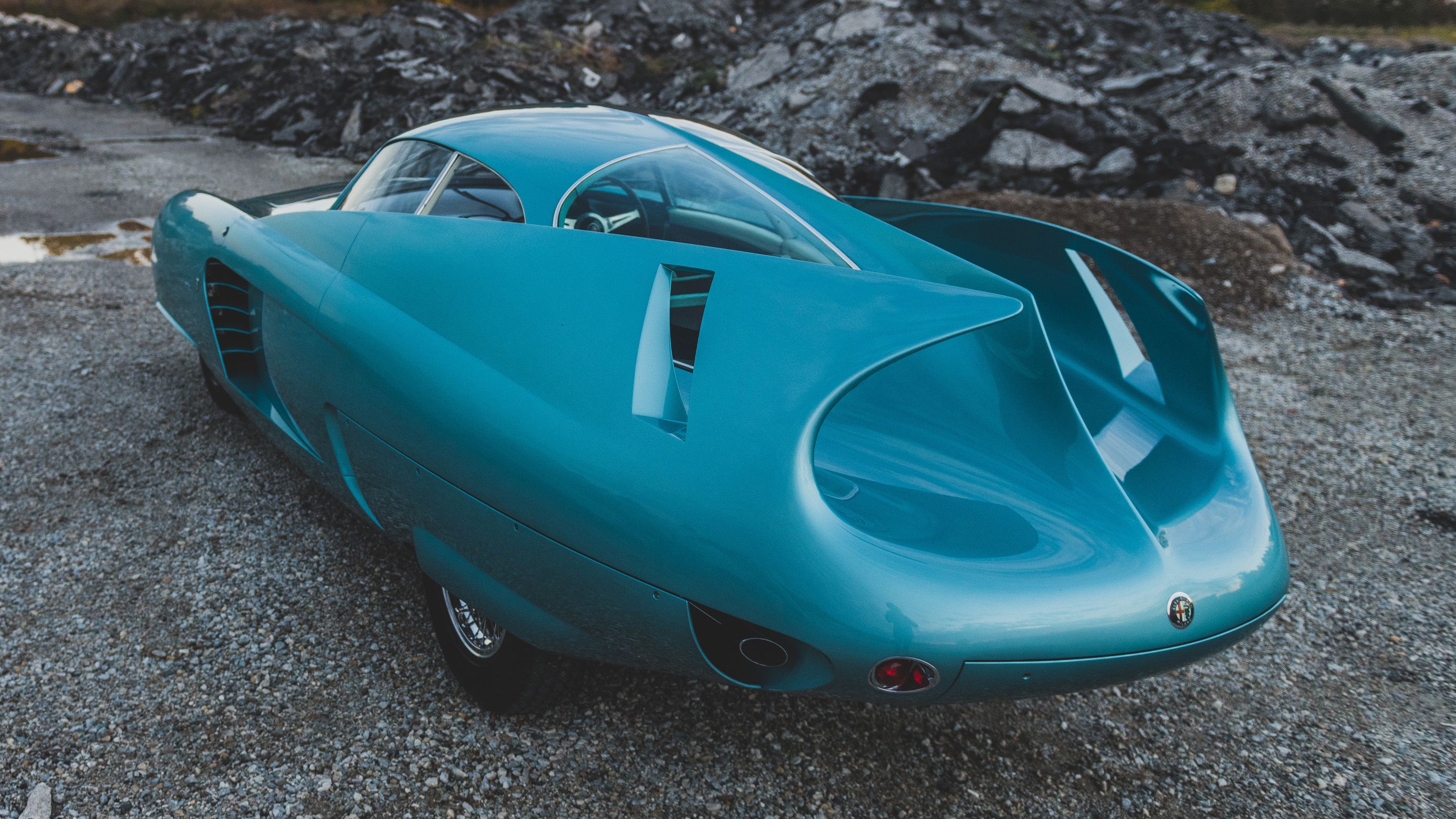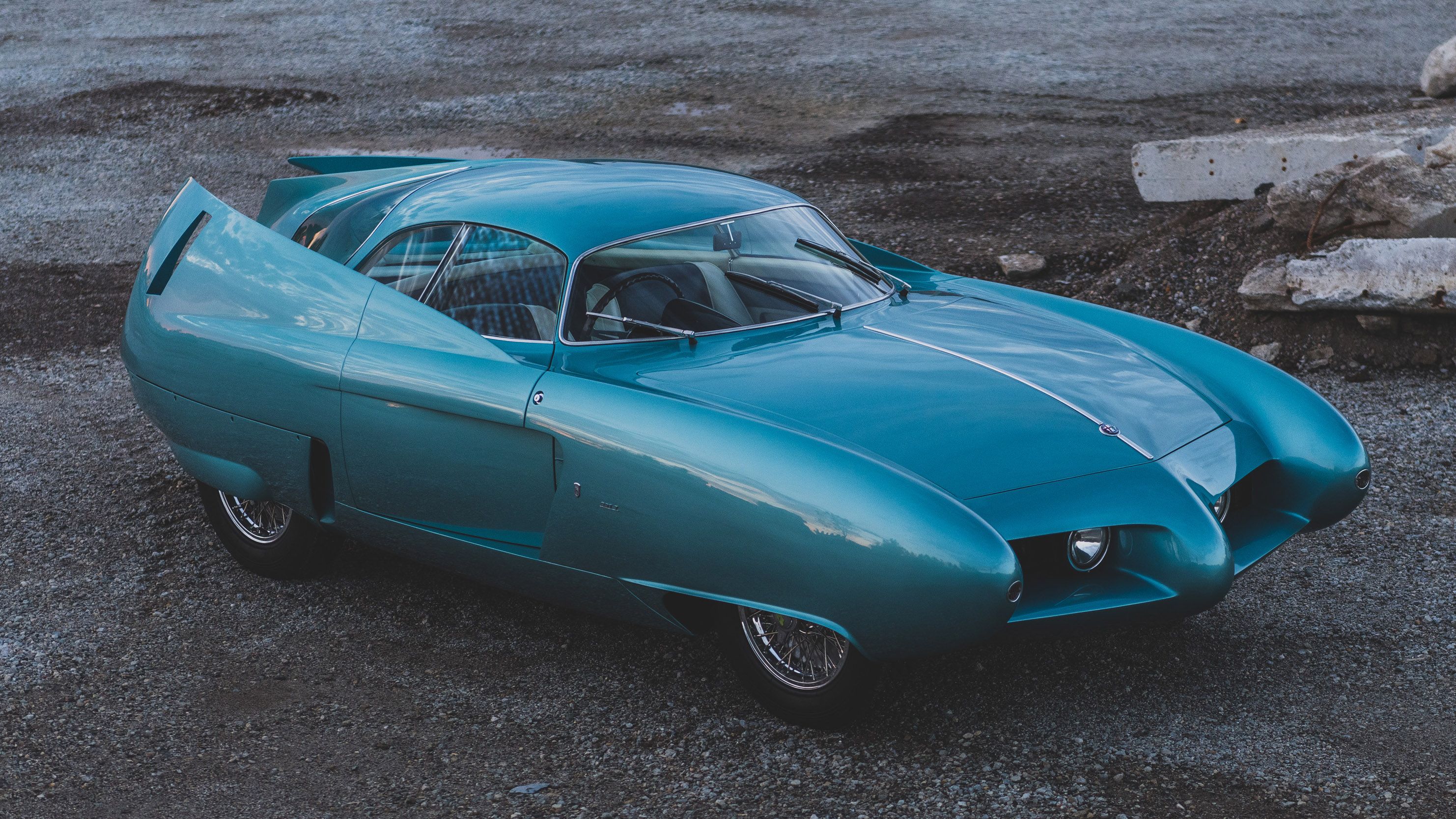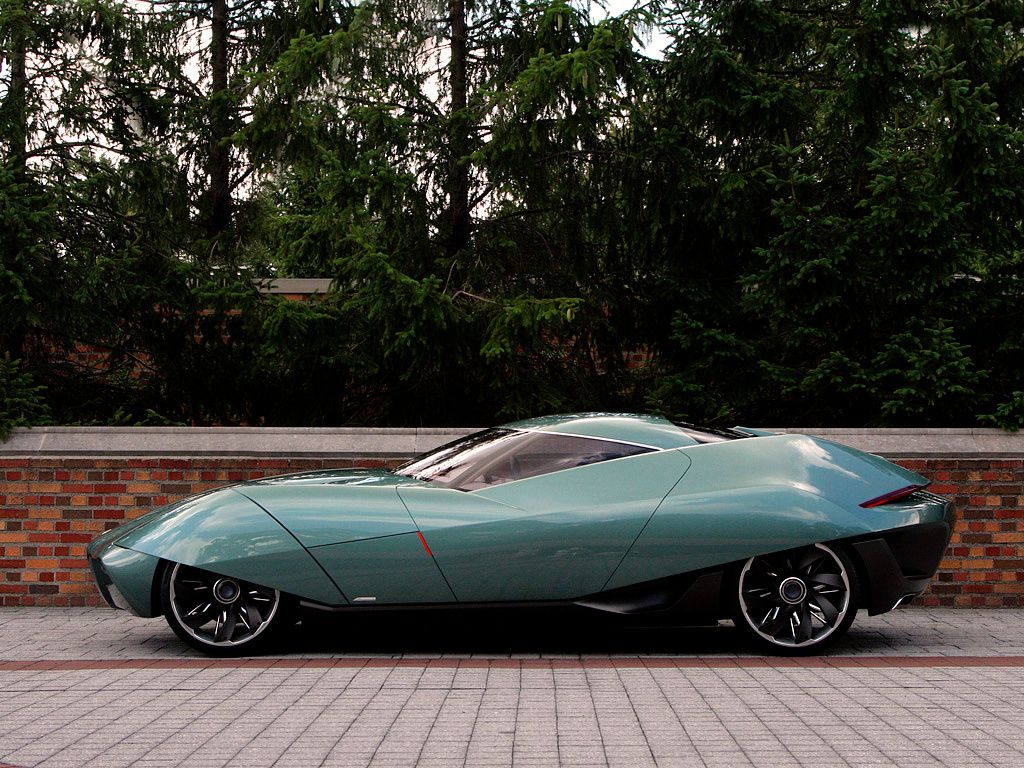In the early 1950's, Italian automobile coachwork and design company, Carrozzeria Bertone set out to create three unique prototype vehicles known as the Berlina Aerodinamica Tecnica cars, or the 'B.A.T' cars. These three cars, which were all designed by Italian automobile coachwork designer, Franco Scaglione, demonstrated unprecedented aerodynamics, and incredibly futuristic designs. Starting with the first 'B.A.T' car, the Alfa Romeo Berlina Aerodinamica Tecnica 5, chassis AR1900 01396.
This dark gray car was fabricated in 1953, and was followed by the light-blue colored Alfa Romeo B.A.T. 7 of 1954 (chassis AR1900C 01485), and finally, the silver Alfa Romeo B.A.T. 9d of 1955 (chassis AR1900 1600), the final car of this series. One additional 'B.A.T.' car was constructed in 2008, known as the Alfa Romeo B.A.T. 11dk, however, this car was built as a display-only, non-fully functional concept car. There are many unique details to learn about these very special cars, and here are just a handful of the endless curiosities and details surrounding the Alfa Romeo Berlina Aerodinamica Tecnica cars that only true gearheads know!
10 The Alfa Romeo B.A.T. 5 Was The First Of The Trio, Sort Of.
This first Berlina Aerodinamica Tecnica car developed was considered 'B.A.T. 5', due to the fact that Franco Scaglione had worked through four full-size models before actually developing the metalwork for the 5th car, which wound up being this car shown here. The 1953 Alfa Romeo B.A.T. 5 distinguishes itself from the bunch with a prominent set of dual nose vents with red-colored horizontal slots, and a beautiful dark gray over red leather specification. This is simply one of the rarest Alfa Romeo automobiles ever made.
This B.A.T. car is capable of achieving a coefficient of drag or approximately 0.23 at around 94mph, and had a tested top speed run of 123.6mph. This example was sold in October of 1953 by Bertone to an American Importer named Stanely 'Wacky' Arnolt. The car was sold again in 1956, and once more over 30 years later in 1987, where it was restored back to it's original color configuaration, and was subsequently displayed at the 1988 Pebble Beach Concours d'Elegance. Most recently, all three B.A.T. cars were offered for sale via an RM Sotheby's auction held in October of 2020.
9 The Alfa Romeo B.A.T. 7 Is Proof The B.A.T. Cars Became Better Each Year!
Visually the most daring of the three cars, the Alfa Romeo B.A.T. 7 of 1954 proved to be even more aerodynamic and lightweight over it's predecessor, and also boasted improved performance, with an approximate top speed of 124mph. One major accomplishment from all three of the prototypes was the fact that they all exhibited incredible drag coefficient numbers, which ultimately resulted in them still being able to compete with modern cars of today in that category.
The B.A.T. 7 had a coefficient of drag of just 0.19, and when compared to advanced modern day vehicles such as the Tesla Model S, which achieves a 0.24 Cd (coefficient of drag), it's clear that Bertone and Franco Scaglione were way ahead of their time in terms of applying functinality to their designs. Perhaps the most eye-catching of the three cars, this particular example was finished so last minute, that Franco Scaglione and Nuccio Bertone personally drove the car themselves to the 1954 Turin Motor Show.
8 The 1955 Alfa Romeo B.A.T. 9d Was The Most Advanced Of The Group.
Of the three aerodynamically-focused prototypes, the Alfa Romeo B.A.T. 9d of 1955, the final B.A.T. car, was easily the most practical for road use. As lovely as the striking designs of the first two B.A.T. cars were, Alfa Romeo and Franco Scaglione toned it down a bit for the 9d, exploring the possibilities of creating a more useable car for regular road driving. This car featured smaller fins in order to improve visibility, and also was equipped with a familiar looking triangular Alfa Romeo Giulietta grille, finished off with the famed Alfa Romeo logo front and center.
The 9d clearly demonstrates the identity of a true Alfa Romeo, and just like the two prototypes that came before it, this car also made use of the mechanical components of the Alfa Romeo 1900. Considering the 9d combines Scaglione and Bertone's signature styling with practical road use, it could very well be considered as one of the greatest Alfa Romeo automobiles ever made.
7 The Alfa Romeo B.A.T. Cars Were Revealed Consecutively During The 1953, 1954, And 1955 Turin Motor Show.
With each year that went by at the Turin Auto Salon, the Alfa Romeo B.A.T. cars did not fail to impress. Even casual observers were mesmerized by the intriguing Bertone-designed prototypes, and each year, the models became increasingly practical, aerodynamic, and enhanced. The three hand-built Carrozzeria Bertone creations were all shown one year after another from 1953 to 1955 at the Turin Motor Show.
When compared to other design companies, Bertone has made it's mark as one of the best with their incredible designs over the years. The Alfa Romeo B.A.T. cars only make up a handful of the endless specialty cars that the company has developed. Alfa Romeo has also developed an endless amount of prototype, limited production, one-off, and few-off vehicles aside from the B.A.T. cars that warrant further research and consideration.
6 The B.A.T. Cars Weren't Shown Together As A Group Until 1989.
Interestingly, the Berlina Aerodinamica Tecnica cars were never shown together in period, despite them all complimenting each other smoothly. Having the cars all together would allow for the viewer to be able to determine the differences between each car, however, this opportunity wouldn't come to life until the 1989 Pebble Beach Concours d'Elegance.
For whatever the reason may have been, the cars were only shown in solo exhibits for a long period of time. During the unique trio's auction preview for RM Sotheby's in 2020, I was personally able to capture and document the three cars all lined up together side by side on on of my social media pages. When shown together, it's beautiful to be able to see the visual differences between each car.
5
Each Example Boasts A Completely Different Interior.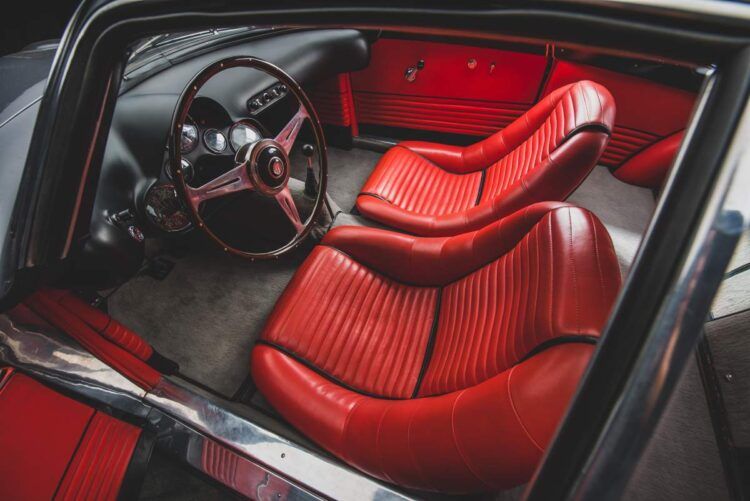
As you can tell, it wasn't just the exterior design that Bertone was focused on making unique. The interior of each of the B.A.T. cars is wildly different, and only the highest standard of materials available at the time were used for this experimental design project, cutting absolutely no corners in the development of these cars. Individually, each one of the B.A.T. cars represent some of the most important automotive concept/prototype vehicles ever built.
Even when stacked up against some of the coolest concept cars of all time, the B.A.T. cars carry such presence both inside and out which sooner or later causes you want to stare. Not only are the car's themselves important, but the auction held by RM Sotheby's also represents one of the most important sales of any car of all time.
4 The B.A.T. Cars Were Developed Using Alfa Romeo 1900 Chassis.
All great creations have to start somewhere, and for the trio of Berlina Aerodinamica Tecnica cars, each car began life as an Alfa Romeo 1900, which is a production model Alfa Romeo produced from 1950 until 1959. The Alfa Romeo 1900 was quite an important model for Alfa Romeo at the time, being that the car was the very first Alfa Romeo offered with left-hand drive configuration, and was the companies first car to ever be built entirely on a production line.
The 1900 was offered in both four-door and two-door models, and a number of coach built versions were created over the years by various design houses. Coach builders such as the well-known, Zagato, and Carrozzeria Touring Superleggera all had their hand's on 1900 chassis at some point to create designs of their own. No matter which variation of the 1900 you may find, they all share one thing in common, elegant beauty.
3 Each Example Utilized A Powerful Four-Cylinder Engine.
Although they appear to be art sculptures, each Alfa Romeo B.A.T. car was equipped with a 1975cc four-cylinder engine, where power was about 100 or so horsepower, give or take. The impressive aerodynamics, combined with the spunky four-cylinder allow for a one-of-a-kind driving experience, and it's safe to say there's not much else similar out there to these daring machines.
It could be a bit of a stretch to consider the engines used in these vehicles as being the best of all time, however, it is safe to say that there really isn't another four-cylinder car on the planet that looks like these! The man responsible for the design of these prototypes, Franco Scaglione, left us with a series of cars that will be considered interesting forever.
RELATED:
2 The B.A.T. 7 Had To Be Driven Into The 1954 Turin Show By Franco Scaglione and Giuseppe "Nuccio" Bertone!
Unlike the glamorous entrance the first Alfa Romeo B.A.T. car had during the 1953 Turin Motor Show, this blue example shown here arrived rather unexpectedly. Work for this specific prototype is said to have taken so long, that the car was barely ready for it's big debut. This lead the designer, Franco Scaglione, and Nuccio Bertone himself to physically drive the car themselves to the show, as the story goes.
Perhaps it was the wild color, or further enhanced engineering that caused delay for this car, and not for the other B.A.T. cars, but that is a story that may never be fully told. What is known is that the Alfa Romeo B.A.T. 7 earned the company major respect after it was proven to be a substantial improvement over it's predecessor, the B.A.T. 5.
1 There Is Actually A Fourth B.A.T. Car!
Despite most sources only reporting on the Berlina Aerodinamica Tecnica cars, one further example was created in 2008 known as the Alfa Romeo B.A.T. 11dk. This car was commissioned by a passionate enthusiast, and serves as a partially functional, display-only concept car. The goal behind this creation was to create a modernized version of the 1950's prototypes. This game changing Italian concept car may not be as iconic as the original cars, but it's a project that definetely deserves to be in the conversation.

